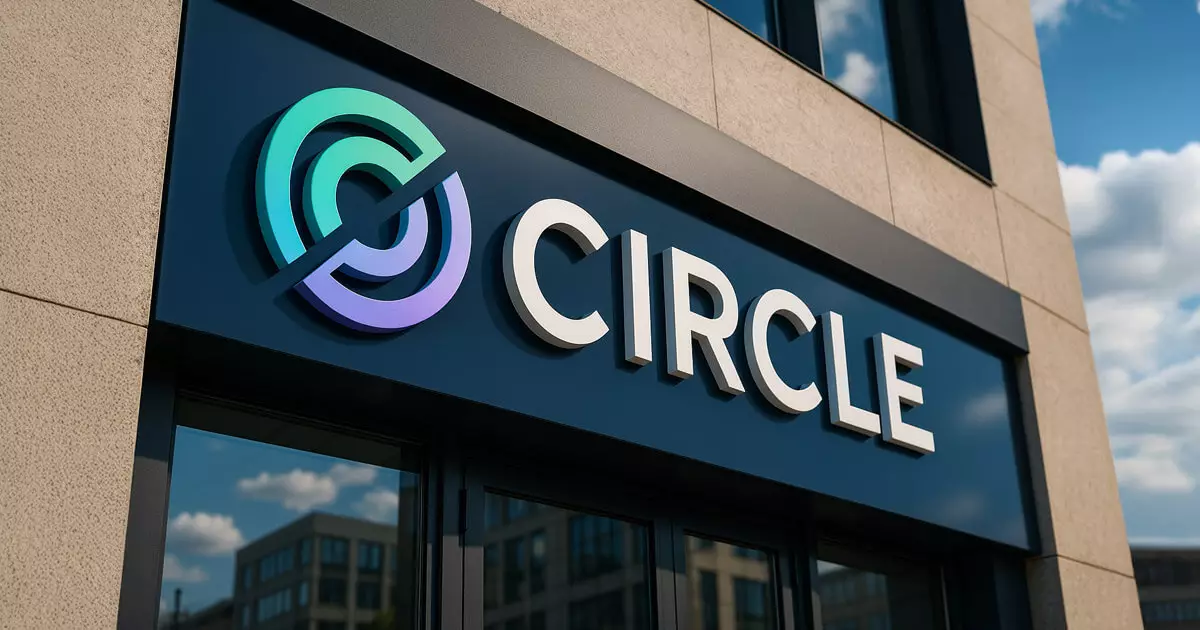In the rapidly shifting terrain of cryptocurrency, Circle—a notable player behind the USDC stablecoin—is poised to make a significant move. While the company is advancing towards an initial public offering (IPO), recent reports spot the possible beginnings of a sale to industry giants like Coinbase or Ripple. This dual trajectory not only highlights Circle’s ambition to reach a $5 billion valuation but also reveals underlying tensions in the lucrative arena of stablecoins. In an industry where adaptability is paramount, one must question whether these potential acquisitions signify a strategic pivot or a desperate gamble.
Circle’s reported decision to pursue an IPO while simultaneously exploring acquisition talks is emblematic of the unpredictable nature of the crypto world. Companies can either soar or crash based on market sentiment, regulatory changes, or competitive pressures. The strategic clarity typically associated with traditional markets can sometimes appear elusive here. If Circle ultimately aims to go public, any preliminary discussions regarding potential sales to Coinbase or Ripple could represent either a safety net or an indication of uncertainty about a successful IPO execution.
Coinbase: The Most Probable Suitor
Recent analyses suggest that Coinbase emerges as the most logical acquirer of Circle. This stems from the deep-rooted integration between the two companies, particularly through their governance of the USDC ecosystem. Their alliance started in 2018, during a promising joint venture known as the Centre Consortium, which allowed both entities to collaboratively manage USDC. However, the dissolution of that consortium in 2023 left Circle firmly in control—while Coinbase retained an important stake and a revenue-sharing agreement.
The revenue dynamics are fascinating; they reveal an embedded relationship that goes beyond mere partnership. Circle and Coinbase reportedly split the residual revenue from USDC by a 50/50 model, yet when users hold USDC on Coinbase, the platform claims 100% of the revenue. This profitable agreement implies considerable reliance on each other, raising questions about the sustainability of their individual strategies outside this interlaced environment. The complexities of such arrangements suggest that Circle’s viability might be easier within the embrace of Coinbase rather than venturing into the unknown of public markets—unless they are willing to sacrifice the unique advantages that come from this collaboration.
The Ripple Bid: Too Little for a Major Player?
Parallel to Coinbase’s potential acquisition, Ripple’s $4 billion to $5 billion bid met with resistance from Circle, which deemed the offer insufficient. Ripple’s proposition reportedly comprised both cash and a native token, XRP. While Ripple boasts significant holdings of XRP valued in the billions, its offer indicates an understanding that the stablecoin landscape is a marketplace of power plays and asserts. Yet, as industry insiders suggest, Coinbase appears far better positioned, not just in terms of liquidity with its $8 billion cash reserve, but also in its strategic execution capabilities. Ripple’s attempts to consolidate power through acquisitions, including their recent $1.25 billion buy of Hidden Road, signals an aggressive stance, but the numbers speak for themselves—Circle remains unconvinced.
The valuation fight illuminates an interesting pattern in the cryptocurrency space: how corporate identity strengthens or weakens strategic value. If Circle perceives its offering as undervalued by Ripple, then it shows a level of confidence in its new governance and market potential—something that could make or break its IPO ambitions.
Unpacking the Interdependencies
Given the constricting boundaries placed on Circle’s ability to forge new partnerships—without Coinbase’s consent—the dependence between these two companies raises an essential question. Are they running complementary businesses, or are they becoming fundamentally entwined to the point of compromise? With critical stipulations, including partial control of intellectual property in the event of Circle’s insolvency, it appears Coinbase holds significant cards in this poker game.
Should Circle continue its IPO project, it must navigate these complexities prudently. Ultimately, the market’s reception hinges on its ability to communicate a clear roadmap that demonstrates independence yet acknowledges essential partnerships. The future viability of both Circle and its USDC depends not just on securing revenue but on carefully unlocking potential synergies without losing the essence of who they are in the process.
As the story unfolds, the industry will undoubtedly be watching closely, aware that in the world of cryptocurrency, bold moves can define legacies.


Leave a Reply